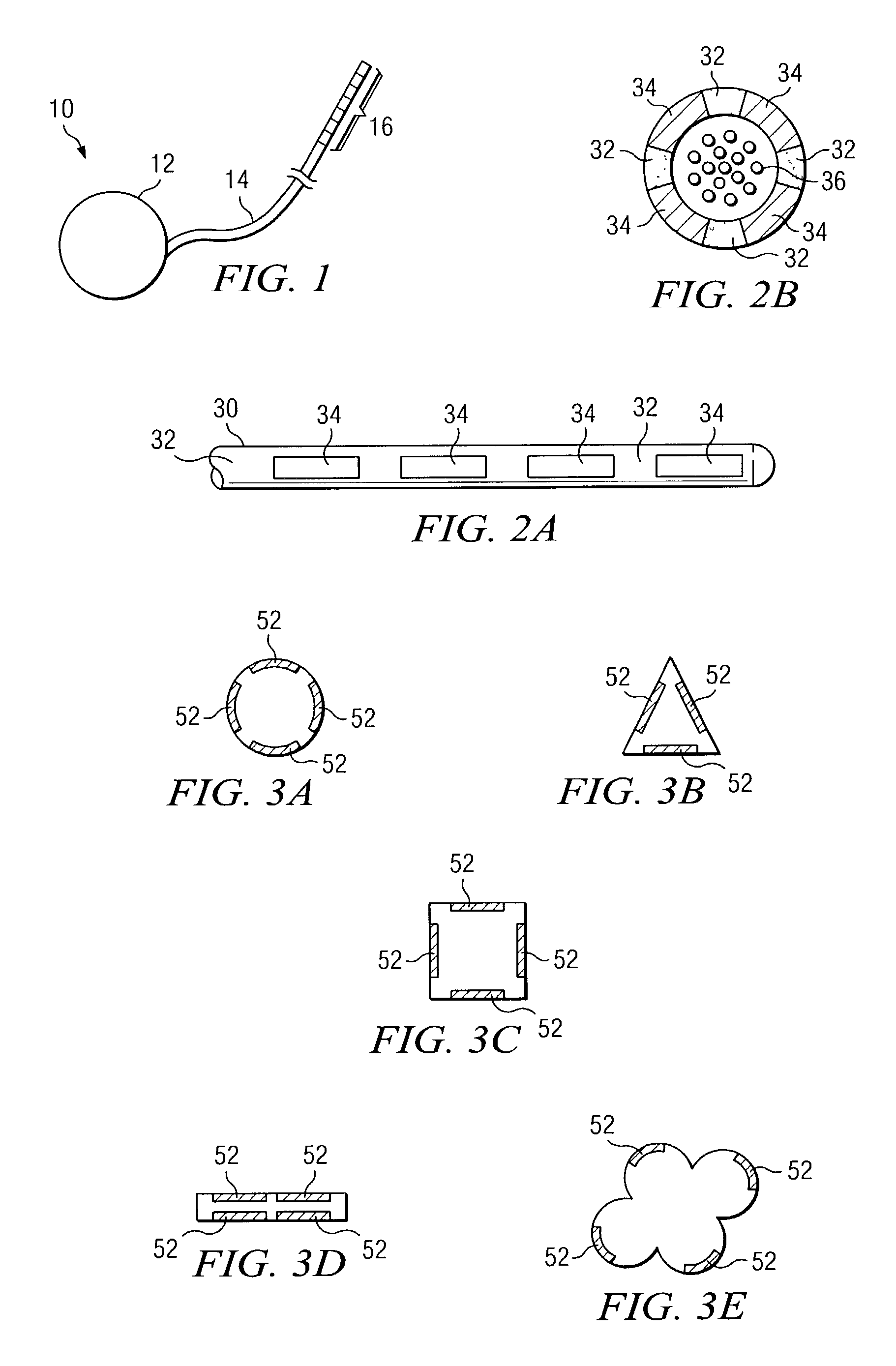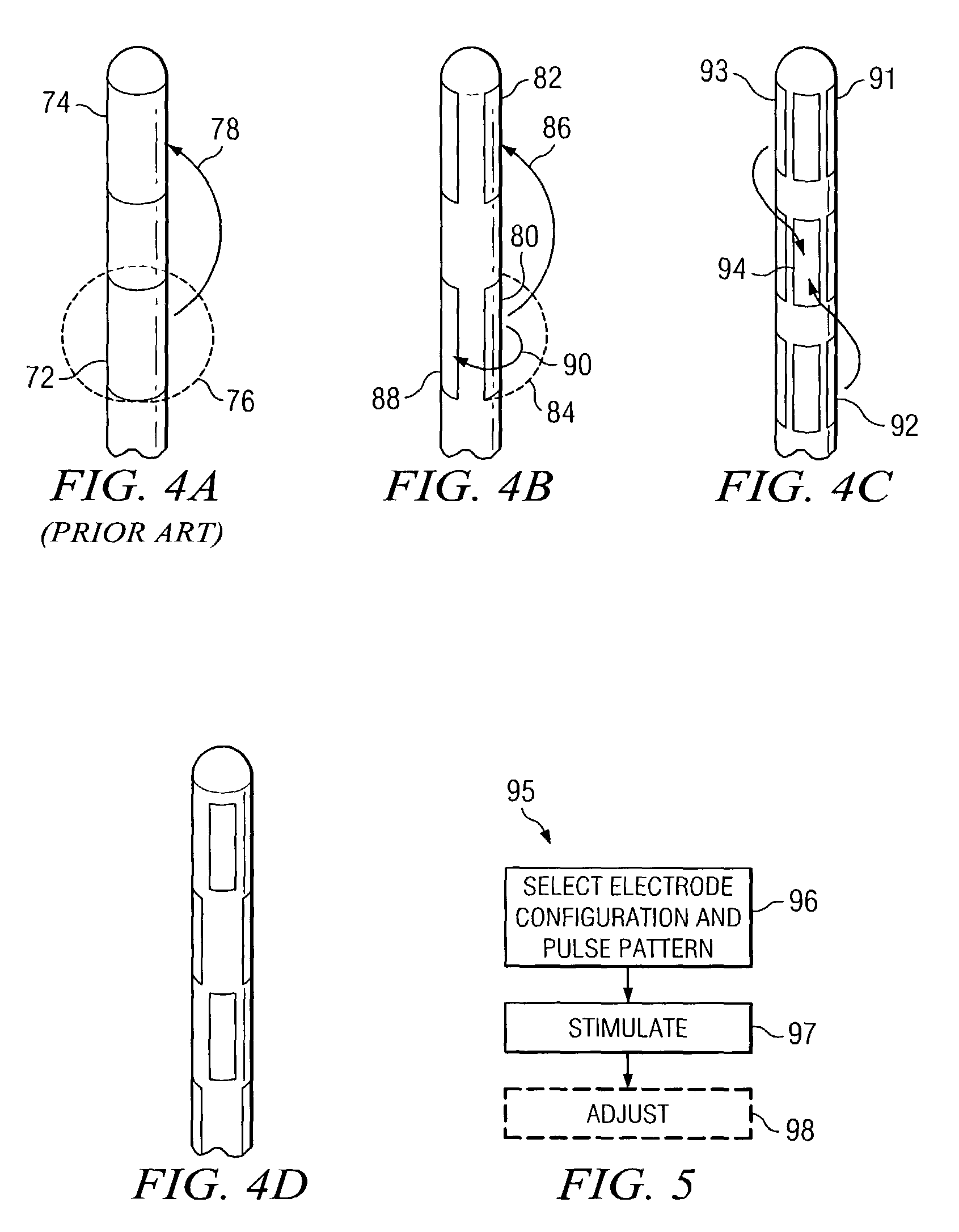Apparatus for directionally stimulating nerve tissue
a nerve tissue and electrode technology, applied in the field of tissue electric stimulation, can solve the problems of electrode stimulation of other tissue, undesired effects, stimulation pulses may affect other tissue in the region, etc., and achieve the effect of stimulating one or more tissues
- Summary
- Abstract
- Description
- Claims
- Application Information
AI Technical Summary
Benefits of technology
Problems solved by technology
Method used
Image
Examples
Embodiment Construction
[0025]Implantable stimulators have been used to treat chronic pain, symptoms of Parkinson's Disease, epilepsy, hearing disorders, depression, and muscle disorders, among others. In each of these applications, the desired treatment area is small and proximate to other tissue for which stimulation would produce undesirable effects. This is especially the case in deep brain stimulation where neural tissue is tightly packed. The nerves in any one region may be responsible for a plethora of functions. For example, excess stimulation in the sub-thalamic region of the brain could lead to paresthesia about the head, loss of balance, depression, peresis, dysarthia, or dystonia. Therefore, it is important to stimulate a small region or a sometimes tortuous path in order to achieve a desired effect. It is also important to avoid stimulating the surround tissue, as that will likely lead to undesired effects.
[0026]A similar problem arises when stimulating the spinal cord near its termination. At...
PUM
 Login to View More
Login to View More Abstract
Description
Claims
Application Information
 Login to View More
Login to View More - R&D
- Intellectual Property
- Life Sciences
- Materials
- Tech Scout
- Unparalleled Data Quality
- Higher Quality Content
- 60% Fewer Hallucinations
Browse by: Latest US Patents, China's latest patents, Technical Efficacy Thesaurus, Application Domain, Technology Topic, Popular Technical Reports.
© 2025 PatSnap. All rights reserved.Legal|Privacy policy|Modern Slavery Act Transparency Statement|Sitemap|About US| Contact US: help@patsnap.com



